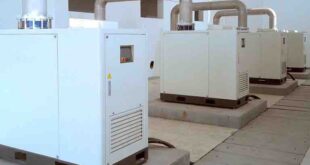The oil industry discards around 1% of all crude oil as waste, generating 120 million tonnes of oily sludge every year, with global legacy deposits exceeding 1.8 billion tonnes. Currently, with no environmental way to treat these, they are either incinerated or dumped with massive environmental impact on oceans, land and air.
Now Envorem, a UK-based technology business, has developed a new Greentech that uses a little-known property of water to rapidly and inexpensively process oil production sludges. This technology, developed with assistance from the University of Brighton, uses very little energy to disassemble sludges, clean the solids and recover the entrained oil for recycling – all without using chemicals or generating emissions.
Crude and fuel oils contain contaminates comprising sediments and water that create an oily sludge. Every day, the equivalent of more than one million barrels of crude oil are discarded by the oil and maritime industries as hazardous waste at a huge environmental and financial cost.
“Today there are thousands of square kilometres of land polluted with crude oil sludge,” says Mark Batt-Rawden, CEO of Envorem. “The issue until recently has not attracted the public’s attention but that is changing as the environmental impact of ongoing oil production and legacy pollution is increasingly appreciated.”
In Western Europe, sludges are usually thermally treated, either by incineration or thermal desorption. Both are a costly and environmentally damaging operations. Incineration releases around 1.5 tonnes of CO2 per tonne of sludge and the latter consumes immense amounts of energy, usually burning the oil it recovers as fuel to reduce costs and generating similar emissions. Where regulations are less stringent, waste sludges are landfilled into large open pits allowing lighter fractions of oil to evaporate, polluting the atmosphere whilst the remaining thick oil creates environmental hazards for wildlife and water resources. It is estimated that global deposits of discarded sludges exceed 1.8 billion tonnes.
In addition to the volumes of sludge, large stockpiles of contaminated soil are constantly being generated from spills and leaks. Even at a very conservative figure of $100/tonne to remediate, the annual new volumes of sludge and soil place a value on the Global market in excess of $12 Billion per annum and a legacy market of over $180 Billion.
Mark Batt-Rawden says: “The oil industry has been seeking a solution for decades but nothing has ever proved effective and viable. It has taken us over 10 years to get this technology right and the solution we have developed pushes the boundaries of technology in a number of areas.”
Envorem’s core technology combines established techniques with hydraulic shock and cavitation, where bubbles are created by the vaporisation of water, a phenomenon copied from the natural world. Cavitation can be generated ultrasonically, electrically, or physically and is widely known as a parasitic effect that destroys propellers on ships and the impellers of pumps.
Mark Batt-Rawden said: “Dumping these wastes into open pits is really just procrastinating the problem as the sludge will not go away. It will eventually have to be incinerated generating colossal quantities of CO2.
“As the world transitions towards a low-carbon future it is crucial that we continue to mitigate against the environmental impact of ongoing oil production and ensure the legacy pollution is addressed. Now we can remove the barriers to act differently by providing a way to spend less and simultaneously reduce pollution.”
Envorem recently completed a highly successful pilot in Oman for their National Oil Company (PDO) to treat sludge and oil-contaminated soil. The pilot proved the technology generates a fraction of the emissions of thermal treatment and is both cheaper and faster. Ninety nine per cent of the oil was removed from sludge as crude of usable quality – a double benefit; reducing the need for extraction and its associated carbon footprint, plus saving emissions from disposal by incineration. Furthermore, this demonstrated that if the value of recovered oil is included, costs are potentially net positive providing a financial as well as environmental case for change in practice. With proven processing speeds of up to 200m3 per hour, Envorem’s Greentech provides a real opportunity for the industry to change practice and rapidly clear legacy deposits.
 Engineer News Network The ultimate online news and information resource for today’s engineer
Engineer News Network The ultimate online news and information resource for today’s engineer



